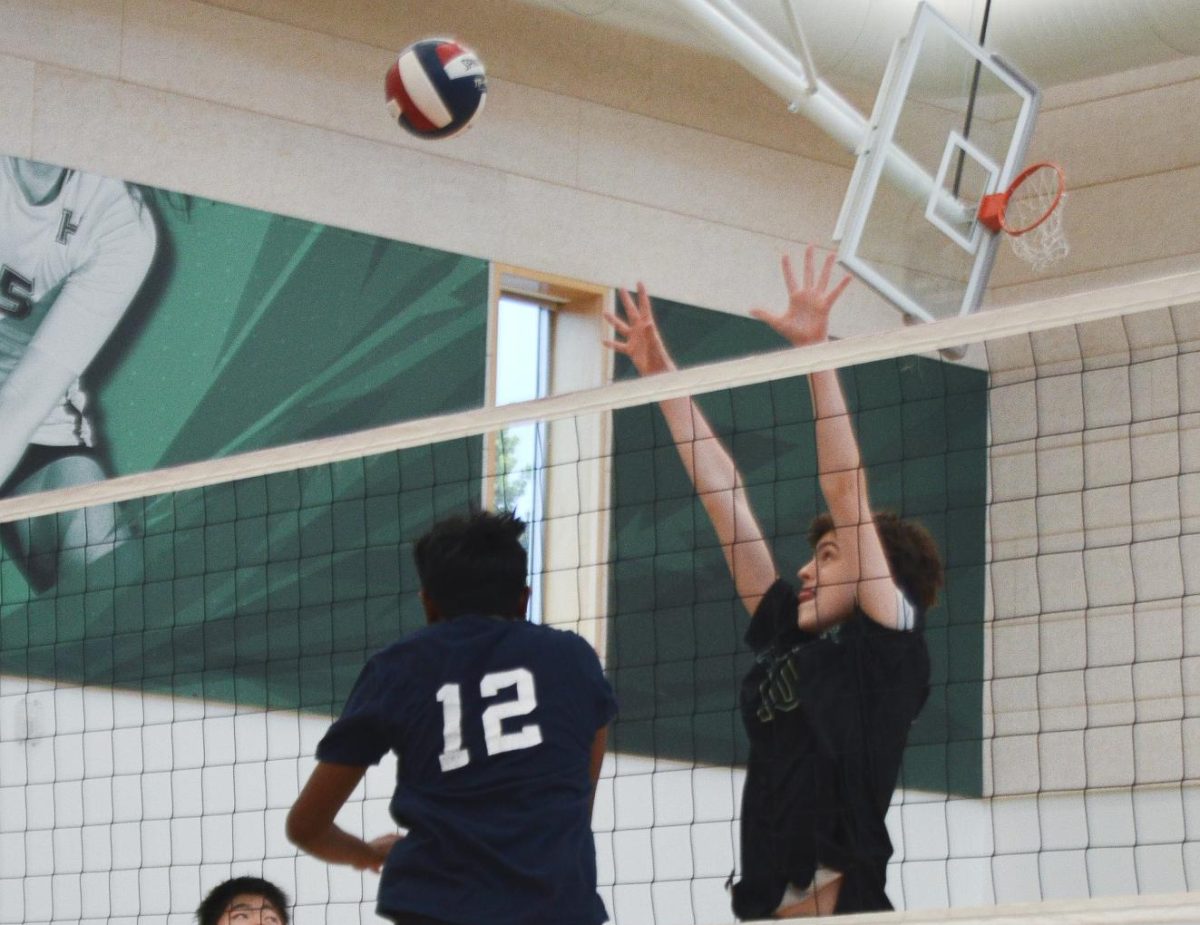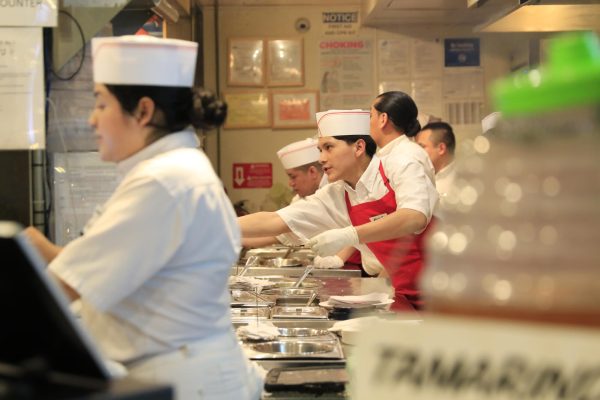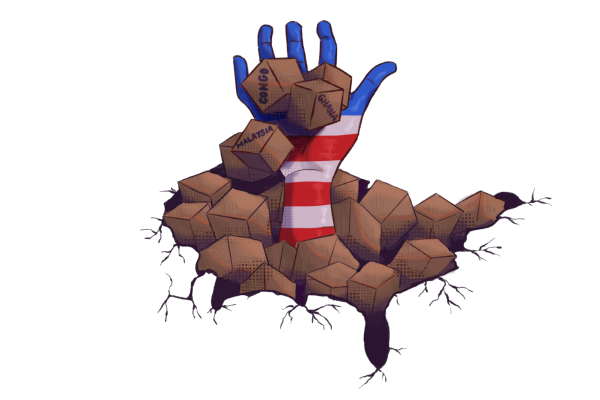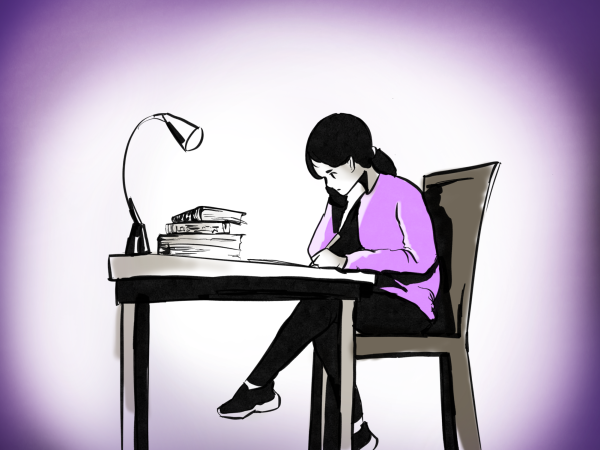California drought requires water usage adjustments
With temperatures reaching the high sixties and low seventies this month and still no rainfall, California is facing its driest year on record. Though it is normal for California to experience droughts occasionally, none have ever been this severe.
On Jan. 17, Governor Jerry Brown officially declared a statewide drought emergency, asking Californians to consume 20 percent less water. Though Brown has not yet mandated water rationing, he indicated that the state government may implement them in the future. One of California’s more recent dry periods occurred during Brown’s previous tenure as Governor, in 1976 and 1977.
That drought prompted many water-saving trends to begin, including citizens installing low-flush toilets, purchasing recyclable showerheads, and replacing lawns with local shrubs that require less water.
Effects of this winter’s low rainfall have included lower levels of snowpacks, increased risk of wildfires, and worsened air quality.
A high-pressure system off the west coast has blocked storms for the past year, and scientists worry that it will never leave.
Environmental science teacher Dr. Kate Schafer has been closely following news of the drought and is conserving water by landscaping plants around the house to minimize their water needs.
“I recently read in The New York Times that they have determined 2013 is the driest year in California by two inches,” she said. “We’re facing the driest year we’ve ever had along with the hottest temperatures day after day. That combination is a concern.”
Freshman Winnie Li has also considered the effects of the drought in her daily life.
“I would think of ways to conserve as much water as possible and move to another place,” she said.
While some people have already felt the impacts of the water shortage, others are not as concerned.
“It hasn’t really impacted me yet, but as soon as there becomes a real limitation on things such as tap water, people will start to care more,” Raymond Xu (12) said. “I don’t think people care that much right now.”
California grows 50% of U.S. grown fruits, nuts, and vegetables, but the lack of water is causing problems. Farmers have already begun to feel the strain and are voicing their needs. The lack of fresh produce will mean that prices for food in supermarkets will increase as well.
In addition to California, ten other states have been designated as natural disaster areas that are at increased risk of fire, including Nevada, Arkansas, Colorado, Hawaii, and Texas. The state will also be hiring more firefighters to combat the spread of fires.
Water-Saving Tips
1. Fix leaks in faucets, toilets, pipes, and sprinklers.
2. Save the running water when you’re waiting for hot water and use it to water plants.
3. Instead of washing fruit and vegetables in running water, wash them in a bowl of water.
4. Water lawns less and in the early mornings.
5. Take shorter showers and replace showerheads with water saving ones.
6. Turn off the water when you’re brushing your teeth.
7. Cover pools with a tarp to prevent water loss.
This piece was originally published in the pages of the Winged Post on Jan. 27, 2014.
Kevin Kai Huang is a senior and People Editor for TALON Yearbook. This is his fourth year on journalism staff. He enjoys reading books, talking to friends,...

A member of the journalism program since freshman year, senior Allison Sun is the Features Editor and Webmaster of Harker Aquila. She was also TalonWP...































![Setter Emma Lee (9) sets the ball to the middle during the match against Pinewood on Sept. 12. “[I’m looking forward to] getting more skilled, learning more about my position and also becoming better friends with all of my teammates, Emma said.](https://harkeraquila.com/wp-content/uploads/2023/09/DSC_4917-2-1200x795.jpg)















































































![“[Building nerf blasters] became this outlet of creativity for me that hasnt been matched by anything else. The process [of] making a build complete to your desire is such a painstakingly difficult process, but Ive had to learn from [the skills needed from] soldering to proper painting. Theres so many different options for everything, if you think about it, it exists. The best part is [that] if it doesnt exist, you can build it yourself, Ishaan Parate said.](https://harkeraquila.com/wp-content/uploads/2022/08/DSC_8149-900x604.jpg)


![“Animation just clicked in a way. I had been interested in art, but that felt different. [Animation] felt like it had something behind it, whereas previous things felt surface level. I wasnt making that crazy of things, but just the process of doing it was much more enjoyable, Carter Chadwick (22) said.](https://harkeraquila.com/wp-content/uploads/2022/08/Screen-Shot-2022-08-16-at-9.44.08-AM-900x598.png)


![“When I came into high school, I was ready to be a follower. But DECA was a game changer for me. It helped me overcome my fear of public speaking, and its played such a major role in who Ive become today. To be able to successfully lead a chapter of 150 students, an officer team and be one of the upperclassmen I once really admired is something Im [really] proud of,” Anvitha Tummala (21) said.](https://harkeraquila.com/wp-content/uploads/2021/07/Screen-Shot-2021-07-25-at-9.50.05-AM-900x594.png)



![“[Volleyball has] taught me how to fall correctly, and another thing it taught is that you don’t have to be the best at something to be good at it. If you just hit the ball in a smart way, then it still scores points and you’re good at it. You could be a background player and still make a much bigger impact on the team than you would think,” Anya Gert (’20) said.](https://harkeraquila.com/wp-content/uploads/2020/06/AnnaGert_JinTuan_HoHPhotoEdited-600x900.jpeg)

![“Im not nearly there yet, but [my confidence has] definitely been getting better since I was pretty shy and timid coming into Harker my freshman year. I know that theres a lot of people that are really confident in what they do, and I really admire them. Everyones so driven and that has really pushed me to kind of try to find my own place in high school and be more confident,” Alyssa Huang (’20) said.](https://harkeraquila.com/wp-content/uploads/2020/06/AlyssaHuang_EmilyChen_HoHPhoto-900x749.jpeg)













![“My slogan is ‘slow feet, don’t eat, and I’m hungry.’ You need to run fast to get where you are–you arent going to get those championships if you arent fast,” Angel Cervantes (12) said. “I want to do well in school on my tests and in track and win championships for my team. I live by that, [and] I can do that anywhere: in the classroom or on the field.”](https://harkeraquila.com/wp-content/uploads/2018/06/DSC5146-900x601.jpg)

![“I think getting up in the morning and having a sense of purpose [is exciting]. I think without a certain amount of drive, life is kind of obsolete and mundane, and I think having that every single day is what makes each day unique and kind of makes life exciting,” Neymika Jain (12) said.](https://harkeraquila.com/wp-content/uploads/2017/06/Screen-Shot-2017-06-03-at-4.54.16-PM.png)



















